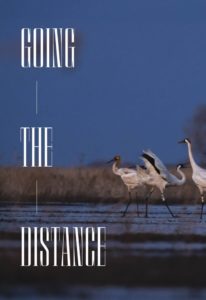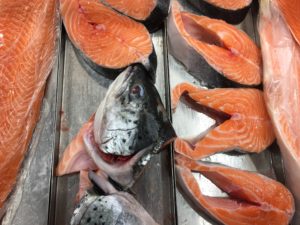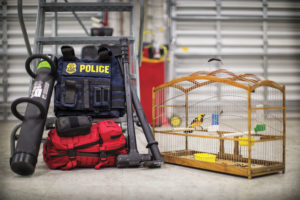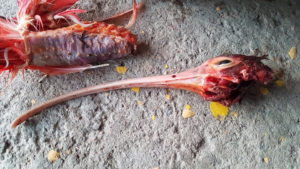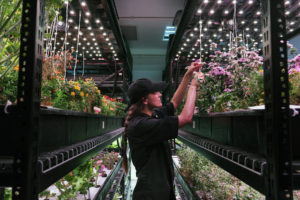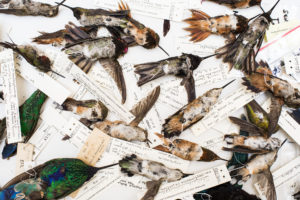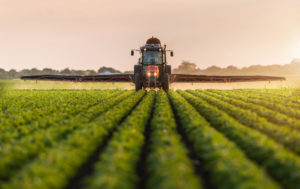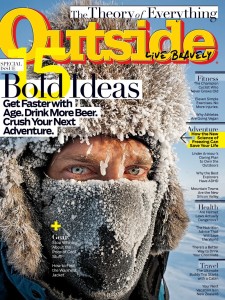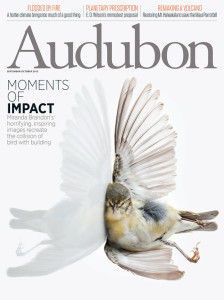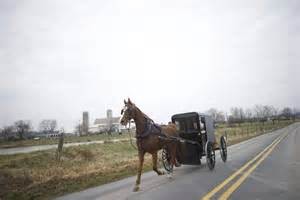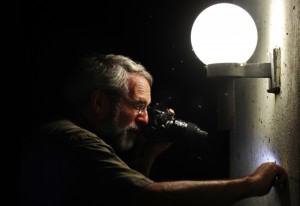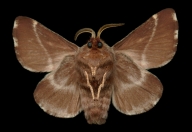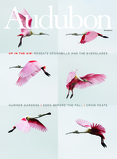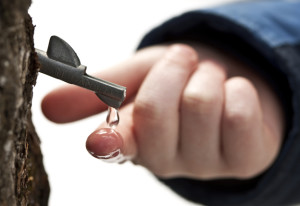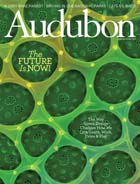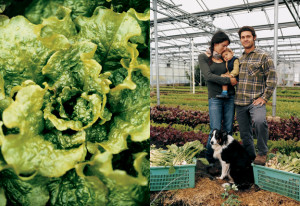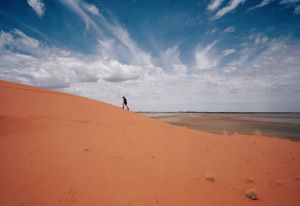Portfolio
This is a selection of Rene’s writing. The newest articles appear at the top. She will be adding more, so keep checking back.
Why are These Emperor Penguin Chicks Jumping from a 50-foot Cliff?
National Geographic, April 2024

The first-of-its-kind footage, taken in January 2024 via drone, captures a rare event that may become more common as sea ice declines and penguins are forced to adapt. Photography and video by Bertie Gregory.
The Quest to Find and Identify Missing Persons
Undark, April 2024

Researchers are testing eDNA as a tool to locate lost soldiers’ remains. Can the approach one day help solve crimes?
Going the Distance
National Geographic, April 2024 Issue
Endangered wild whooping cranes must soar across the continent each year to ensure the survival of their species—a journey packed with obstacles like power lines and poaching. Photography by Michael Forsberg.
The Uncharted World of Emerging Pathogens
Undark, February 2024
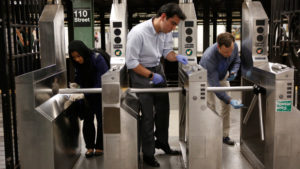
In their quest to detect early outbreaks, virus hunters are sampling environmental DNA in water, dirt, and air.
RISE OF THE LONE STAR TICK BRINGS NEW DISEASE THREATS
Undark, February 2024
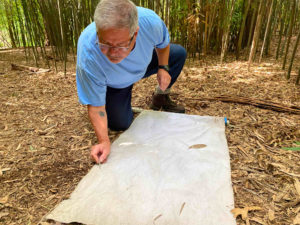
As the arachnid expands northward, it’s bringing novel maladies, from a meat allergy to the Bourbon virus.
OLD-SCHOOL HAIR ANALYSIS IS JUNK SCIENCE. BUT IT STILL KEEPS PEOPLE BEHIND BARS.
The Marshall Project in partnership with Mother Jones, December 2023.
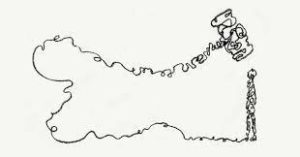
The technique, developed before DNA testing, can’t definitively tie suspects to crime scenes. Try explaining that to juries — or some judges. Illustrations by Raj Jeshang for The Marshall Project.
A FORCE OF CONSERVATION, THE ENDANGERED SPECIES ACT FACES A FRAUGHT FUTURE
Audubon, November 2023
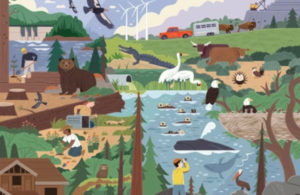
Fifty years after its passage, the powerful policy has proven effective at preventing wildlife from going extinct. Only with innovation and advocacy can it continue to do so for decades to come. Illustration by Alexander Vidal.
HOW TO FORTIFY THE ENDANGERED SPECIES ACT FOR THE NEXT 50 YEARS
Audubon, November 2023
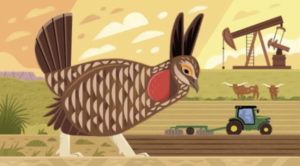
In the years ahead, flora, fauna, and the ecosystems they depend on will face many hazards, both old and new. These actions could strengthen the act’s ability to meet evolving challenges. Illustration by Alexander Vidal.
THE RACE TO PROTECT ENDANGERED CONDORS AGAINST DEADLY BIRD FLU
Undark, October 2023
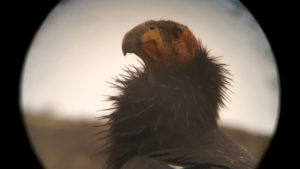
Avian flu vaccines hadn’t been used on birds in the U.S. until condors started succumbing to the virus last year. Photograph by Nadya Seal-Faith.
THERE ARE TWO NORTHERN WHITE RHINOS LEFT ON EARTH. CAN A CONTROVERSIAL APPROACH SAVE THEM?
National Geographic, September 2023
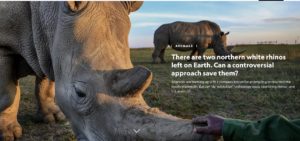
Scientists are teaming up with a company known for attempting to resurrect the woolly mammoth. But can “de-extinction” technology really save living rhinos—and is it worth it? Photography by Ami Vitale.
50 YEARS OF PROJECT PUFFIN: AN ORAL HISTORY OF AN AUDACIOUS IDEA
Audubon, Summer 2023
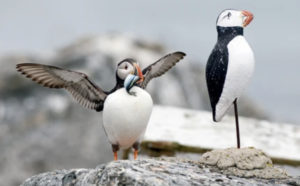
In 1973 a young biologist hatched a plan to bring a charismatic seabird back to Maine. It was the start of a five-decade scientific adventure that would ultimately revolutionize seabird restoration. Photograph by Derrick Z. Jackson.
CANCER PATIENTS ARE CONFRONTING WIDESPREASD SHORTAGES OF CHEMOTHERAPY DRUGS
Washington Post, June 2023
Doctors, scrambling to find the medications, are having to delay life-saving therapies. Photograph courtesy of Laura Bray.
$80 MILLION IN HEALTH CARE FRAUD EXPOSED AFTER PATIENT’S SUSPICIOUS DEATH
AARP, June 2023

A chiropractor’s office stole from Medicare for years. Here’s how crimes like this affect you. Illustrations by Ryan Inzana.
FROM FOREST TO TABLE: INSIDE THE WORLD’S BUSHMEAT PROBLEM
National Geographic, May 2023
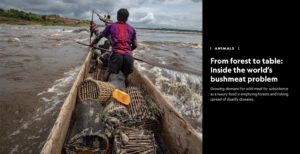
Growing demand for wild meat for subsistence as a luxury food is emptying forests and risking spread of deadly diseases. Photography by Brent Stirton.
A DEADLY MONKEYPOX VARIANT IS SURGING IN CENTRAL AFRICA
National Geographic, October 2022
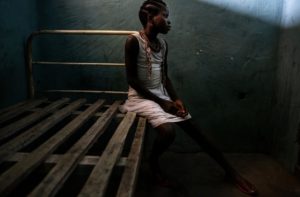
Experts are calling for stronger measures to stop a variant found in the Democratic Republic of the Congo that’s 10 times deadlier than the global strain. Photography by Brent Stirton.
HOW KILLING WILDLIFE IN THE UNITED STATES BECAME A GAME
National Geographic, April 2022
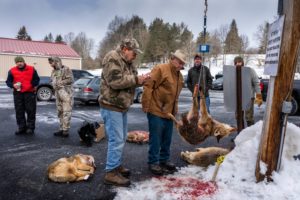 Calls for a ban escalate as controversial hunting contests kill more than 60,000 animals a year. Photography by .
Calls for a ban escalate as controversial hunting contests kill more than 60,000 animals a year. Photography by .
HE TEACHES POLICE “WITCHING” TO FIND CORPSES. EXPERTS ARE ALARMED.
The Marshall Project, in partnership with Mother Jones, March 2022
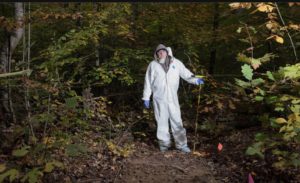
At the National Forensic Academy, crime scene investigators learn to dowse for the dead, though it’s not backed by science. Photography by Tamara Reynolds.
REPORTS OF RAPTOR KILLINGS SOARED DURING THE U.K.’S LOCKDOWN
National Geographic, October 2021
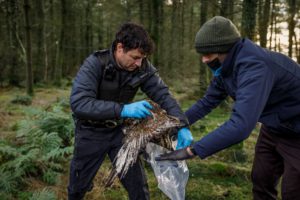
Conservationists allege that during the pandemic, gamekeepers on grouse shooting estates have killed many protected raptors—and that the government has turned a blind eye. Photography by Anastasia Taylor-Lind.
WHY YOU MIGHT NOT BE GETTING THE SALMON YOU PAID FOR
National Geographic, September 2021
America’s favorite fish is swimming in a sea of controversy, from alleged corporate price fixing and false sustainability claims to mislabeling and fraud. Sidebar: Tips to Make Sure You’re Buying Sustainable Salmon.
HOW eDNA IS REVOLUTIONIZING THE TRACKING OF ELUSIVE SPECIES. IT MAY SOON BE USED TO FIGHT WILDLIFE TRAFFICKING.
Washington Post, May 2021
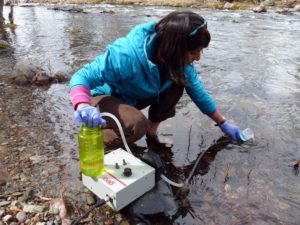
Kellie Carim, an aquatic research biologist, collects an eDNA sample from Rattlesnake Creek near Missoula, Mont.
HOW “DOLPHIN SAFE” IS CANNED TUNA, REALLY?
National Geographic, March 2021

StarKist, Bumble Bee, and Chicken of the Sea are facing claims that they’re misleading shoppers.
WINTER IS PRIME TIME FOR WATCHING BALD EAGLES
National Geographic, February 2021

Recovered from near extinction, the U.S. national bird is now abundant and easy to see.
WHY WHALES ARE HAVING A MOMENT–IN NEW YORK
National Geographic, January 2021
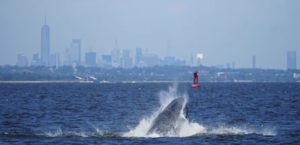
With cleaner waters and more available food, humpbacks are making a splash in the Big Apple to the delight of whale watchers and conservationists.
THE BLACK-MARKET TRADE IN WILDLIFE HAS MOVED ONLINE, AND THE DELUGE IS DIZZYING
National Geographic, December 2020
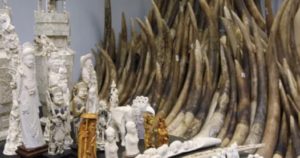
Illegal wildlife ads have increased on Facebook despite its steps to combat animal trafficking. Crime watch groups are calling for broad legal reforms.
AT SEA AND IN COURT, THE FIGHT TO SAVE RIGHT WHALES INTENSIFIES
Yale E360, November 2020
 As numbers of North Atlantic right whales continue to decline because of entanglements with fishing gear and fatal ship strikes, conservationists are waging an escalating legal battle to force fishermen to take more aggressive measures to protect the world’s rarest cetacean.
As numbers of North Atlantic right whales continue to decline because of entanglements with fishing gear and fatal ship strikes, conservationists are waging an escalating legal battle to force fishermen to take more aggressive measures to protect the world’s rarest cetacean.
NATIONAL PARKS ARE BEING OVERRUN BY INVASIVE SPECIES
National Geographic, June 2020
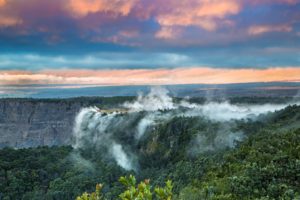
Causing more habitat damage than natural disasters, these creatures put native wildlife at risk. Here’s how you can help stop them.
CRITICAL PELICAN NESTING GROUND RESTORED, 10 YEARS AFTER BP SPILL
National Geographic, May 2020
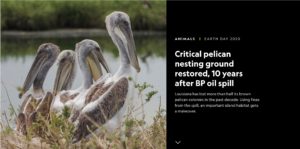 Louisiana has lost more than half its brown pelican colonies in the past decade. Using fines from the spill, an important island habitat gets a makeover.
Louisiana has lost more than half its brown pelican colonies in the past decade. Using fines from the spill, an important island habitat gets a makeover.
DEATH SPIRAL
Audubon, Spring 2020
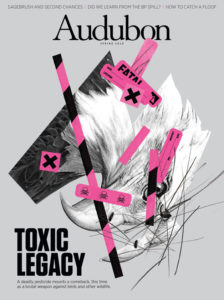
This Brutal Pesticide Creates a ‘Circle of Death.’ So Why Is It Making a Comeback? Illustrations by Mike McQuade.
CIRCUS-LIKE PERFORMANCES BY SNOW MONKEYS IN JAPAN CONTRADICT THEIR LONG-REVERED STATUS
National Geographic, March 2020
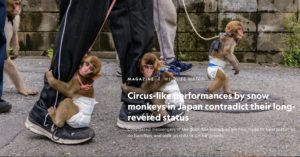 Considered messengers of the gods, the macaques are now made to wear costumes, do backflips, and walk on stilts to please crowds. Photography by Jasper Doest.
Considered messengers of the gods, the macaques are now made to wear costumes, do backflips, and walk on stilts to please crowds. Photography by Jasper Doest.
DEMAND FOR GINSENG IS CREATING A ‘WILD WEST’ IN APPALACHIA
National Geographic, January 2020
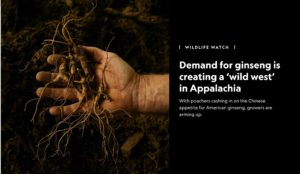 With poachers cashing in on the Chinese appetite for American ginseng, growers are arming up. Photography by Greg Kahn.
With poachers cashing in on the Chinese appetite for American ginseng, growers are arming up. Photography by Greg Kahn.
DOWN ON THE BODY FARM: UNLOCKING FORENSIC SECRETS OF DECAYING CORPSES
Undark, November 2019
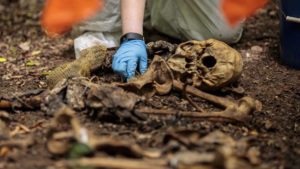
Researchers at outdoor “body farms” look to microbes of human decay to help identify corpses and pinpoint time of death. With photography from Steven Bridges.
FIRST RESPONDERS STRUGGLE WITH PTSD CAUSED BY THE EMERGENCIES, DEATHS, TRAGEDIES THEY FACE EVERY DAY
The Washington Post, October 2019
“We rush into burning fires or deal with the worst injuries — that’s our job, it’s what we’re trained to do. But we’re also human, and sometimes our brains can’t compute the horrible things we see.”
AUDUBON’S CLIMATE ACTION GUIDE
Audubon, Fall 2019
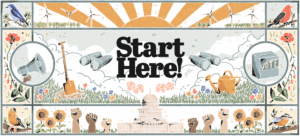 Feeling like you can’t make a difference? That couldn’t be further from the truth. Here’s where to begin and how to amplify your efforts to make lasting change in the world. Winner 2020 National Magazine Award Personal Service Category.
Feeling like you can’t make a difference? That couldn’t be further from the truth. Here’s where to begin and how to amplify your efforts to make lasting change in the world. Winner 2020 National Magazine Award Personal Service Category.
HOW INTREPID BIOLOGISTS BROUGHT NATURAL BALANCE BACK TO THE ALEUTIAN ISLANDS
Atlas Obscura, August 2019
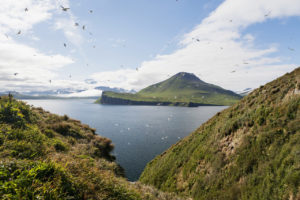
To save birds such as the cackling goose, first the foxes had to go.
BEEKEEPERS HIT HARD BY THEFTS OF HIVES
National Geographic, May 2019
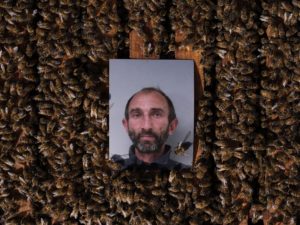
In sophisticated night heists, thieves are stealing thousands of bees. Why? Photography by Lucas Foglia.
INSIDE THE MURKY WORLD OF THE AQUARIUM TRADE
National Geographic, December 2018 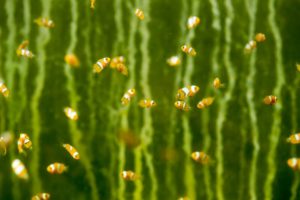
An eight-year undercover investigation has taken down poachers and smugglers raiding Florida’s coastal waters for corals and fish. With photography by Eve Edelheit.
MEET THE UNDERCOVER CRIME UNIT BATTLING MIAMI’S BLACK MARKET BIRDS
Audubon, September 2018
Multimillion-dollar sales of songbirds heap pressure on species already in decline. We go inside the covert investigation to capture traffickers. Photography by Karine Aigner
TRINIDAD’S NATIONAL BIRD SERVED UP AS BUSH MEAT
National Geographic, August 2018
As the government works to protect the scarlet ibis from its own citizens, it has increased poaching fines a hundredfold.
CAN HIGH-TECH INDOOR AGRICULTURE TRANSFORM LOCAL FOOD?
Edible Brooklyn, June 2018
Are New York’s new operations destined to only cater to elite clients, or can they help realize a new local food future?
YOU ARE WHAT YOU EAT
Cooking Light, May 2018
Or, more precisely, you are what you eat eats. Here we explore the wild and diverse world of your gut microbiome and its critical role in your total body health—from head to toe. Produced in partnership . Illustrations by Jennifer Bouron.
INSIDE THE BLACKMARKET HUMMINGBIRD LOVE CHARM TRADE
National Geographic, April 2018
Catch a hummingbird. Kill it. Wrap it in underwear, cover it with honey—and sell it to arouse passion in a lover. Photography
FLORIDA OPENED A FAKE ALLIGATOR FARM TO CATCH POACHERS
National Geographic, November 2017

A multiyear undercover investigation snagged nine men who now stand accused of felonies ranging from poaching to racketeering. Photography by Kirsten Luce.
Did Monsanto Ignore Evidence Linking Its Weed Killer to Cancer?
The Nation, October 2017
Attorneys and activists have accused Monsanto of manipulating the science around glyphosate’s health impacts—in essence, of following the playbook written by Big Tobacco. Produced in partnership with
TRUST YOUR GUT
Prevention, August 2017
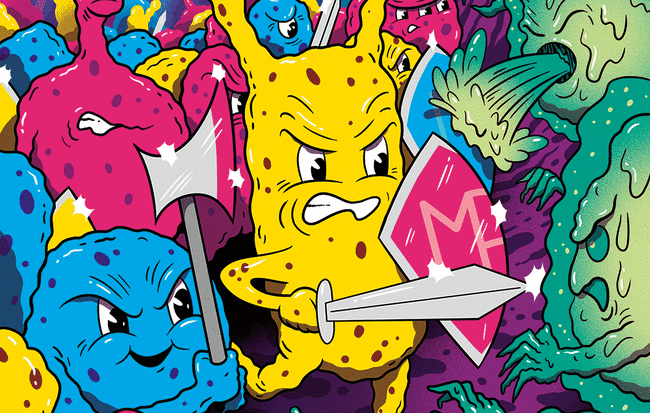 The bacteria living there play a huge role in keeping us healthy—and may even harbor solutions for some of our most vexing illnesses.
The bacteria living there play a huge role in keeping us healthy—and may even harbor solutions for some of our most vexing illnesses.
INSIDE THE MULTIMILLION-DOLLAR WORLD OF EEL TRAFFICKING
National Geographic, June 2017
 Agents with the U.S. government’s ‘Operation Broken Glass’ have nabbed more than a dozen men for smuggling valuable baby eels to Asia. Produced in partnership Photography By Sarah Rice.
Agents with the U.S. government’s ‘Operation Broken Glass’ have nabbed more than a dozen men for smuggling valuable baby eels to Asia. Produced in partnership Photography By Sarah Rice.
THE TRUTH ABOUT RECYCLING IN AMERICA
Organic Life, April 2017
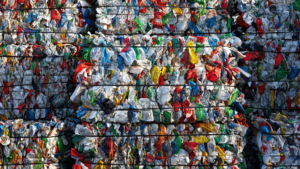
After decades of growth, our recycling rate has stalled. Is single-stream recycling to blame?
THE RE-ANIMATORS
Popular Science, July 2016
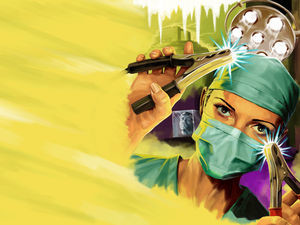 How Scientists Are Bringing People Back From The Dead. Pressing pause could mean the difference between life and death.
How Scientists Are Bringing People Back From The Dead. Pressing pause could mean the difference between life and death.
HOW TO KEEP HONEYBEES
Modern Farmer. Summer 2016. Cover Story
 Join the backyard beekeeping revolution and keep pollinators buzzing. The payback’s pretty sweet.
Join the backyard beekeeping revolution and keep pollinators buzzing. The payback’s pretty sweet.
YOU’RE NOT WARM UNTIL YOU’RE WARM AND DEAD
Outside, January 2016. Cover story
People coming back to life after being frozen stiff. Frogs that cryopreserve for winter and then reanimate. The emerging frontier of extreme cold is offering revolutionary new insights and therapies for everything from deadly exposure to peak athletic performance.
SUDDEN IMPACT
Audubon, Sept/Oct, 2015. Cover story
When birds and buildings collide, Minneapolis artist Miranda Brandon gives victims of bird strikes new life. Photography by Miranda Brandon.
HOW TO TURN YOUR DOG OFF
Nautilus, March 5, 2015
 Suspended animation is becoming a life-saving medical procedure.
Suspended animation is becoming a life-saving medical procedure.
MODERN ARK
Audubon, March-April, 2015
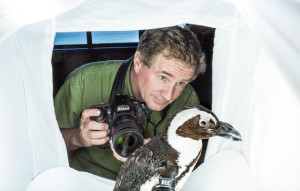
Joel Sartore wants a close-up of every captive species on earth—as many as 12,000 animals—before it’s too late. Photography by Joel Sartore.
Q&A: MICHAEL POLLAN
Audubon, November-December, 2014
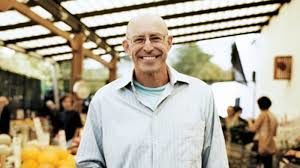 Celebrated author Michael Pollan talks climate change, and how farming can help stop it.
Celebrated author Michael Pollan talks climate change, and how farming can help stop it.
Extra: How to Cook Like Michael Pollan, Online.
AT THE CROSS ROADS
Mental_Floss, October 2014
The most high-tech advances in genetic research are happening in the most unexpected place—the heart of quiet Amish country.
THE BITTER TRUTH, Q&A WITH SPIRITS AUTHOR BRAD THOMAS PARSONS
Modern Farmer, July 2014
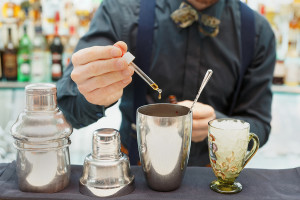
THE NIGHT STALKERS
Audubon, May-June 2014
Birds have birders who go birding. It only follows that moths should have moth-ers who go mothing. Photography by Jim des Rivieres.
Click here to see slideshow.
WELCOME TO THE BODY FARM
Mental Floss, March 2014
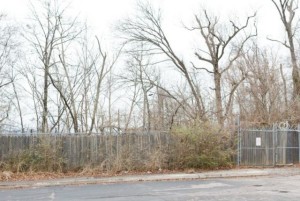 Beyond the border of an ordinary parking lot lies the most cutting-edge graveyard in the world… and a hands-on lab for cops and forensic anthropologists. Photography by Graham Yelton.
Beyond the border of an ordinary parking lot lies the most cutting-edge graveyard in the world… and a hands-on lab for cops and forensic anthropologists. Photography by Graham Yelton.
.
FOOD NETWORK
Audubon, July-August 2013
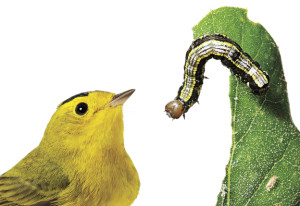 Creating a backyard habitat that attracts wildlife, especially birds, sounds like a good idea. But does it work? New research is providing proof that small habitats can make a big difference. Photography by David Liittschwager.
Creating a backyard habitat that attracts wildlife, especially birds, sounds like a good idea. But does it work? New research is providing proof that small habitats can make a big difference. Photography by David Liittschwager.
Decades after the roseate spoonbill staged a major comeback from plume hunting, one of the world’s most bizarre and beautiful birds is again sending warning signs about the state of the Everglades. Photography by John Huba.
SWEET SUCCESS
Audubon: March-April 2012
Drizzling your flapjacks with bona fide maple syrup tapped from northern hardwood forests provides a mouthwatering breakfast—and a boon to birds. Photography by Ben Stechschulte.
THE WORLD OF TOMORROW
Audubon, September-October 2009. Cover Story
The days when buildings simply sat there sucking down vast amounts of energy are almost over. Today’s best houses, schools, restaurants, and arenas sip their megawatts, while catching rainwater, sparing resources, and preserving green space—without sacrificing style, or fun.
CROSSROADS
Audubon, November-Eecember 2009
Walk in Jesus’ footsteps, explore the ruins at Masada, or take a dip in the Dead Sea, but don’t forget to look up. A half billion birds fly over Israel each year, making the Holy Land one of the world’s top birding destinations. Photography by Katherine Kiviat.
BEST OF GREEN DESIGN
Popular Mechanics, October 2008
Your home may be your castle, but there’s no need for exorbitant utility bills to make it as pricey as the real thing. From windows that can insulate against Arctic temperatures to a machine that converts your garage into a biofuel pumping station, these pages showcase today’s most ingenious products for achieving energy and water efficiency.
HAPPY MEALS
Audubon, March-April 2007
In a New York City suburb, a grand experiment in farming yields food that is grown locally on a small scale and free of toxins. The well-heeled diners flocking to the farm’s gourmet restaurant and the carefree children attending its camps may well be getting a taste of the future. Photography by Rob Howard.
THE ORIGINAL OZ
Audubon, July-August 2006
Scorching deserts filled with birdsong, a coast dotted with life-restoring aboriginal fires, rivers pulsing with crocodiles. At once the most dangerous and beautiful place on earth, australia’s northern territory is the true outback that legendary explorers couldn’t conquer. Photography by George Fetting.
PLAYING DEFENSE
Audubon, September-October 2006
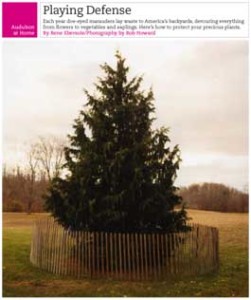
Each year doe-eyed marauders lay waste to America’s backyards, devouring everything from flowers to vegetables and saplings. Here’s how to protect your precious plants. Photography by Rob Howard.
